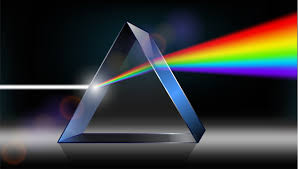
COURSE DESCRIPTION: This is a supporting course used to further develop confident skills in the extensive use of lenses, oscilloscope, laser beams, fibre optics, microwaves, and other related devices in waves. Core course experiments are, Young double slit experiment, refractive index of glass, diffraction grating, the speed of sound (CRO, Resonance). Other complementary laboratory involves Hooks constant by oscillation, inclined planes and circular motion.
- Teacher: Jose Acosta
This is a course designed to provide a deep understanding about the origin, nature and practical importance of waves. Topics covered are oscillations, simple harmonic motion, resonance, damping, lenses, wave categories, total internal reflection, laws of refraction, Huygen’s principle, superposition, interference, diffraction, polarization, sound waves, water waves, light waves, the electromagnetic spectrum, stationary and progressive waves. Pre-requisite for this course is O-level physics.
- Teacher: Jose Acosta
COURSE DESCRIPTION: This course is designed to make students appreciate electronics and its use in a developing society. Topics include, alternating current, transformer, rectifiers, semi-conductors, p-n junction diodes, the transistor, transducers, operational amplifiers as comparator and adder, logic gates and their truth tables, half-adder, memory gates, optic fibers, channels of communication, and the impact of electronics in our society. There is no pre-requisite for this course.
- Teacher: Jose Acosta
This is a course in which students are exposed to entirely new material of modern physics. Topics include charge particles, cross fields, Millikan's experiment, Einstein photoelectric effect, wave particle duality, de Broglie's theory, Rutherford's experiment, Bohr model of the atom, emission and absorption spectrum, Einstein energy mass relation, binding energy, fusion, fission; nature of alpha, beta and gamma radiation; radioactivity, carbon dating, and X-ray. Pre-requisite for this course is Ph175.
- Teacher: Jose Acosta
COURSE DESCRIPTION: This course is designed to make students appreciate electronics and its use in a developing society. Topics include, alternating current, transformer, rectifiers, semi-conductors, p-n junction diodes, the transistor, transducers, operational amplifiers as comparator and adder, logic gates and their truth tables, half-adder, memory gates, optic fibers, channels of communication, and the impact of electronics in our society. Co-requisite for this course are PH183 and PH 285.
- Teacher: Jose Acosta
